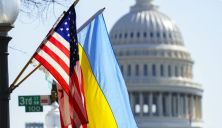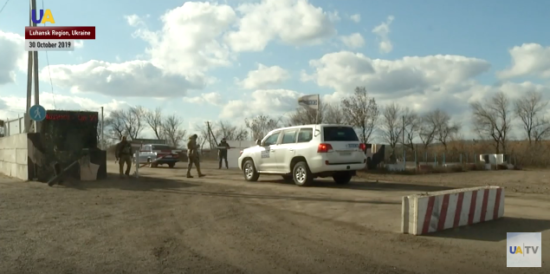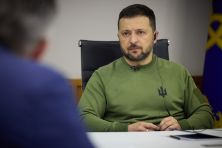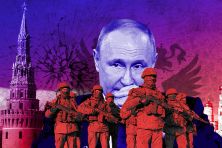Stanytsia Luhanska: First Disengagement Area
On the 26th of June, the disengagement of military formations from the demarcation line began in Stanytsia Luhanska. Over the course of three days, Ukrainian military personnel pulled back one kilometer. Russian backed militants were supposed to do the same.
“They tried to create the image that their doing something or leaving their positions, but this was only for the cameras,” Yuriy, a Ukrainian soldier, said.
After Ukrainian forces withdrew, 74 homes and about 100 local residents now found themselves in the so-called buffer zone.
“From personal experience, I can say that when there is fighting going on, we can’t get help from anywhere. Everything completely falls onto our shoulders,” Tetiana, a Stanytsia Luhanska resident, said.
Zolote: Second Disengagement Area
The second disengagement area is Zolote. Forces were withdrawn here on October 19th. Now, the settlement and the surrounding areas are relatively safe.
“It’s been quiet, and that’s the most important thing for me. Everything is quiet, and it good. We’re living now as we lived before,” Olha, a Zolote resident, said.
Bohdanivka: Third Disengagement Area
Bohdanivka was the third area to see disengagment carried out. Both Ukrainian and Russian backed hybrid forces pulled back one kilometer.
In contrast to the first two areas, Bohdanivka is not considered to be in the so-called gray zone, but in territory fully under the control of Ukrainian forces. The roads there are in poor shape, and only suitable for special equipment and OSCE offroad vehicles.
“To prevent anything getting stuck in the mud, we put down boards. We’re also insulating everything, because it’s winter. Wood is also being brought in,” Oleksiy, a Ukrainian soldier, said.
“This is, in fact, a position that was created completely form scratch. We dug a hole under the kitchen and fitted it our with boards,” Serhiy, a Ukrainian soldier, said.
The soldiers say that these positions aren’t as good to see enemy positions. That’s because this area is quieter.
“There’s more distance than there was. And morally, it’s easier. We are following the situation and in the case of aggression, we will respond adequately. ,” Oleksiy said.
Outcomes
Dmytro Lykhoviy, an editor for the internet publications Novynarnia, which mainly publishes content related to war, says that the disengagement of forces was less of a questions of safety, and more of a political decision. He says that this is because forces were only withdrawn in places which were relatively quiet anyway.
“The war in Donbas isn’t happening in order for the shooting to stop. If that was the case, they could just stop funding the military. It seems that Zelensky has been convinced that regardless of peaceful Ukrainian initiatives, the war is, so far, going in favor of Russia and Putin, and their plans to destabilize Ukraine,” Dmytro Lykhoviy, Novynarnia Editor.
Ukraine’s former Minister of Foreign Affairs Pavlo Klimkin also believes that the disengagment of forces will have no effect on the overal security situation. The disengagement was one of the conditions of the Normandy Format meeting. The meeting itself however didn’t leave a positive impression on the former minister.
“Doesn’t this allow them to shoot mortars or from howitzers? It does! Will this stop the saboteurs? No, it won’t! Disengagement is a difficult decision. I believe that tactically, this negatively affects our positions. Putin isn’t interested in Zelensky’s success, and that’s why he’s setting conditions that are benficial to him specifically,” Klimkin said.
In 2020, three more areas are to be disengaged, but Ukraine and Russia have yet to agree on where.













